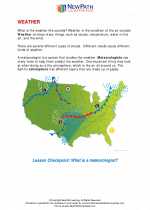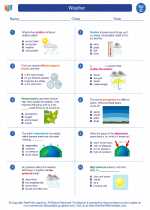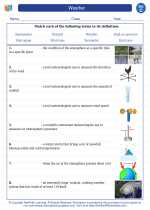Chemical Bonding
Chemical bonding is the process by which atoms are held together to form compounds. Atoms can form bonds by sharing electrons (covalent bonding) or by transferring electrons to form ions that are attracted to each other (ionic bonding).
Types of Chemical Bonding
- Covalent Bonding: In covalent bonding, atoms share pairs of electrons to achieve a full outer shell of electrons. This type of bonding is common in molecules like water (H2O) and methane (CH4).
- Ionic Bonding: Ionic bonding occurs when one atom transfers electrons to another, resulting in the formation of positively and negatively charged ions that are attracted to each other. An example of ionic bonding is the formation of table salt (NaCl) from sodium and chlorine ions.
- Metallic Bonding: Metallic bonding occurs in metals, where the atoms share a "sea" of electrons that are free to move throughout the material. This allows metals to conduct electricity and heat well.
Factors Affecting Chemical Bonding
Several factors influence the type of chemical bonding that occurs, including:
- Electronegativity: The tendency of an atom to attract a bonding pair of electrons. Large differences in electronegativity between atoms lead to ionic bonding, while small differences result in covalent bonding.
- Valence Electrons: The number of electrons in the outermost energy level of an atom. Atoms with a few valence electrons are more likely to lose or gain electrons to achieve a full outer shell, leading to ionic bonding.
- Atomic Structure: The arrangement of electrons in an atom's energy levels influences its ability to form different types of bonds.
Study Guide
To understand chemical bonding, it's important to:
- Learn about the structure of an atom, including the arrangement of electrons in energy levels.
- Understand the concept of valence electrons and how they determine an atom's ability to form bonds.
- Explore the differences between covalent and ionic bonding, including examples of compounds formed by each type of bonding.
- Examine the factors that influence the type of bond that forms between atoms, such as electronegativity and valence electrons.
- Practice drawing Lewis dot structures to represent the bonding and non-bonding electrons in molecules.
Understanding chemical bonding is essential for comprehending the properties and behaviors of different substances, as well as for predicting how different atoms will interact with each other to form new compounds.
[Chemical Bonding] Related Worksheets and Study Guides:
.◂Science Worksheets and Study Guides Third Grade. Weather
Study Guide Weather
Weather  Worksheet/Answer key
Worksheet/Answer key Weather
Weather  Worksheet/Answer key
Worksheet/Answer key Weather
Weather  Worksheet/Answer key
Worksheet/Answer key Weather
Weather  Vocabulary/Answer key
Vocabulary/Answer key Weather
Weather  Vocabulary/Answer key
Vocabulary/Answer key Weather
Weather 

 Worksheet/Answer key
Worksheet/Answer key
 Worksheet/Answer key
Worksheet/Answer key
 Worksheet/Answer key
Worksheet/Answer key
 Vocabulary/Answer key
Vocabulary/Answer key
 Vocabulary/Answer key
Vocabulary/Answer key

The resources above cover the following skills:
EARTH AND SPACE SCIENCE (NGSS)
Earth’s Systems
Students who demonstrate understanding can:
Represent data in tables and graphical displays to describe typical weather conditions expected during a particular season.